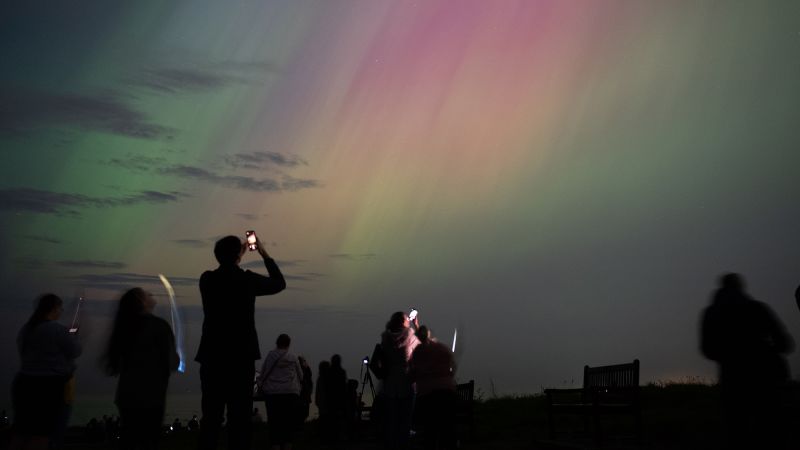On Wednesday night, an extraordinary celestial event could unfold across various northern regions of the United States, thanks to a powerful solar storm. The National Weather Service’s Space Weather Prediction Center has issued an alert indicating that vibrant auroras may be seen farther south than usual, with potential visibility extending into places like the lower Midwest and the state of Oregon. The recent escalation in auroral activity has been attributed to a severe solar storm that has reached a G4 level on the geomagnetic storm scale, signaling conditions that can greatly impact electronic communications and power grid operations.
The solar storm’s origin lies in multiple coronal mass ejections (CMEs) that erupted from the sun’s atmosphere over the weekend. These large clouds of ionized gas and magnetic fields traveled across space and reached Earth earlier than anticipated, prompting officials to issue a strong geomagnetic storm watch. By Wednesday afternoon, the severity was confirmed as G4, affecting both the atmosphere and technologic infrastructures on our planet. As such, the storm has raised concerns regarding potential disruptions not only to telecommunications and satellite operations but also to electrical grids that are vital for daily activities.
Despite these concerns, the dramatic display of auroras, also referred to as the northern and southern lights—aurora borealis in the northern hemisphere and aurora australis in the southern hemisphere—remains one of nature’s most breathtaking phenomena. The ongoing solar storm is believed to contribute to the intensified visibility of these mesmerizing lights, resulting from the interaction of energized particles emitted during coronal mass ejections with Earth’s magnetic field. As the solar activity increases, an uptick in solar flares has also been documented, with researchers noting the heightened frequency and intensity of these solar outbursts.
As for the continuation of these atmospheric display opportunities, experts suggest that the geomagnetic storm conditions might linger through Thursday, providing additional chances for enthusiastic skywatchers to observe the event. If tonight’s sky turns out to be cloudy, EarthSky recommends considering a look towards the heavens on Thursday night as well, as the atmospheric conditions may remain favorable for auroral sightings.
Historically, such geomagnetic storms are not entirely uncommon but tend to vary in frequency and intensity through the sun’s roughly 11-year solar cycle. Currently, we are nearing the solar maximum phase, wherein solar activity peaks and heightened storms occur more regularly. A particularly notable event happened in May 2024, classified as a rare extreme geomagnetic storm, which caused unusual auroral displays across regions where they are typically unseen. During that storm, technology like GPS was momentarily disrupted, affecting agricultural operations reliant on precise positioning, but the overall infrastructure remained resilient thanks to efficient management by power grid and satellite operators.
Last October, a similarly severe storm resulted in widespread aurora sightings across the United States, marking a significant occurrence of this natural light display within the nation’s borders. To keep track of auroral occurrences, officials from the National Oceanic and Atmospheric Administration recommend utilizing the aurora dashboard provided by the Space Weather Prediction Center. This continuously updated resource gives real-time insights into the potential visibility of auroras in specific areas based on theoretical forecasts.
Interestingly, even if the naked eye does not perceive the auroral lights, technological sensors in cameras or smartphones can often capture them, allowing onlookers to witness their beauty through photographic means. Hence, whether through direct observation or by peering into the lens of a camera, this week offers a unique opportunity to engage with one of nature’s most captivating spectacles. Observers across the nation should prepare for potentially enchanting evenings filled with light, color, and the magic of our planet’s dynamic interactions with solar activity.












